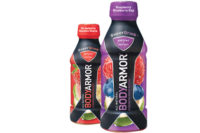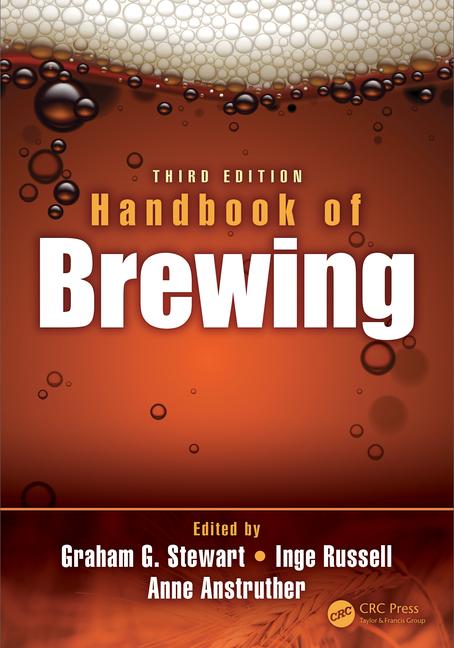
Maintaining an efficient warehouse can be a key component where beverage companies are looking to spend their capital. One avenue that companies are researching for help in efficiency as well as cost savings is automated storage and retrieval systems (AS/RS).
With a growing number of SKUs and requests for mixed pallet deliveries, technology and software integrations in warehouse automation are geared to make those demands more attainable.
Hartness International Inc. offers its Hartness Vertique Warehouse Automation to provide its customers with accurate and dependable case picking and order fulfillment. The Vertique, which is available in fully automated or semi-automated configurations, can build mixed case pallets with an accuracy rate of more than 99.9 percent, the company says.
“This Vertique system takes out the full pallets and it interjects it into the towers,” says Scott Smith, global director of marketing for Hartness International. “It can be done automatically with a depalletizer and that’s for really high volume SKUs. They get put in the towers automatically. We know what case it is and we say, ‘OK it needs to go in this tower’ based on the automatic. We also have a semi-automatic where you have someone who actually hand loads. That’s a little bit less expensive.”
Hartness’ semi-automatic system has personnel filling the tower, but the automation of the system still is controlling the picking that is being used to comprise the pallet.
“You have a static that says this is what you put here,” Smith says about the semi-automatic system. “Typically if you were trying to build a pallet it would be 150 cases an hour. Here you pick 500 cases.”
The Vertique system also has a vertical design to maximize warehouse space and minimize the amount of labor needed. Lines also can be converted to accommodate different product sizes and various size pallets.
Handling of pallets and their mixed order fulfillment is a request that more warehouse automation and integrated systems are looking to fulfill for their customers.
Dematic Group, which recently purchased HK Systems, is staying on top of that with its product line.
“We’re working on a number of automated order fulfillment systems for the beverage wholesale space that would utilize the AS/RS technology to pick orders and fulfill orders for mixed SKU outbound orders,” says Lonnie Watkins, account executive for Dematic’s integrative systems group. “We’re using AS/RS technology to pick cases to build mix SKU orders. And there’s a huge benefit in that regardless of the size of the operation, because you get a lot of in-house picking efficiencies if you don’t have the people doing it. You get a lot of delivery efficiencies when you’re building by stop as opposed to building by route.”
Dematic offers several products in its AS/RS lineup, which generally are crane based. The crane will travel up and down the dedicated aisle to load the pallets or trays to its storage location. Watkins says those systems can be anywhere in the range of 10, 12, 14 to 120 feet tall.
“For the overall size of the system on pallet handling systems, we’ve done work in process systems that are probably 4,000 to 5,000 pallets and we’ve done 450,000 pallets,” Watkins says. “It kind of runs the gamut.”
Keeping things dense
When deciding to opt for an AS/RS having a dense storage system can not only help in saving of space but also in costs.
Westfalia Technologies Inc. offers its Satellite technology with its AS/RS to store pallets up to 12 deep in a lane.
“With the dense storage that we can provide it saves a lot of space within a warehouse,” says Laura Worker, Westfalia’s marketing manager. “If you’re doing new construction that means you’re dealing with a smaller building. It reduces your structure cost. It also probably affects less of the environment, which these days is a very important green initiative.”
This dense system also allows for a reduction in energy costs with regard to items that need to be refrigerated, she says.
“Between 30 to 40 percent less [energy] because you’re at a tighter cubic area as opposed to a conventional warehouse where it’s spread out over two levels or three levels,” Worker says.
Having a dense storage system can be one of the key benefits in an automated AS/RS. Dematic’s Watkins thinks it could actually be the No. 1 advantage.
“We’re making the best utilization of space and particularly footprint in a facility because we can go so tall,” he says. “We store them very densely anyway, and hopefully they can be stored in a conventional system because we don’t have fork trucks that have to maneuver around and drive through the facility rack. So they’re very densely stored and we can go very, very tall, so out of a small footprint we can store a lot of material.”
No warehouse too small
A concern beverage companies might have about switching to AS/RS is whether the size of their operation can see a return on the investment.
Hartness offers scalable automation for its customers to help meet their needs. Smith says Hartness has a wide range of customer needs that they are able to meet. They have a client that has 3,200 SKUs, but they also work with clients that have only 150 SKUs.
“A lot of customers think ‘OK we have to be 3,200 SKUs,’” he says. “… As opposed to doing fully automated, you’ve got different price points based on SKUs based on your volume and it’s scalable up through businesses. Don’t not look at it just because you might do 150 or 100 SKUs. Look at it and look at doing it with different levels of automation.”
And Worker says that Westfalia supplies mainly to smaller companies and says that you don’t have to have a mega system to benefit from an AS/RS.
“We can put these in existing buildings,” she says. “They don’t have to be these new rack supported buildings. They can go in an existing building because it all depends on that inventory SKU mix. That’s where it all starts for us. If somebody comes to us with a project, we have a material handling questionnaire front and back that we hand them and it just gives us the basics to know if a high-density system will work or whether they’ll be better off with a double-deep system.”
Worker also notes that they stay on top of what their customers want by speaking with them.
“We are somewhat of a custom house because we have our in house engineering: mechanical, electrical, software — all in house,” she says. “We basically build the system they need. We have the engineers to do that. That’s how we stay on top of it, constantly innovating because our customers are constantly asking for things.”
Bright future
Safety, labor costs and efficiency are among the segments that beverage companies are concerning themselves with when considering how to operate their warehouses. Companies such as Hartness International, Dematic Group and Westfalia Technologies are looking to help these companies find those solutions with their product lines.
But whether you are a small business or a warehouse with a high range of SKUs, Watkins says Dematic tries to explain to its clients the importance of researching what system works best for you.
“If you’re a buyer and you’re thinking of going down this automation road, you really need to do your diligence up front and pick a supplier that you feel is competent to do what you need done,” he says. “Then work with that particular integrator, like we are a system’s integration company, in a team kind of fashion to get the work done.” BI
Related Links:
Warehouse: Innovations adapt to changing warehouse
Warehouse: Storage systems
Operations: Advanced conveyor technology moves in




